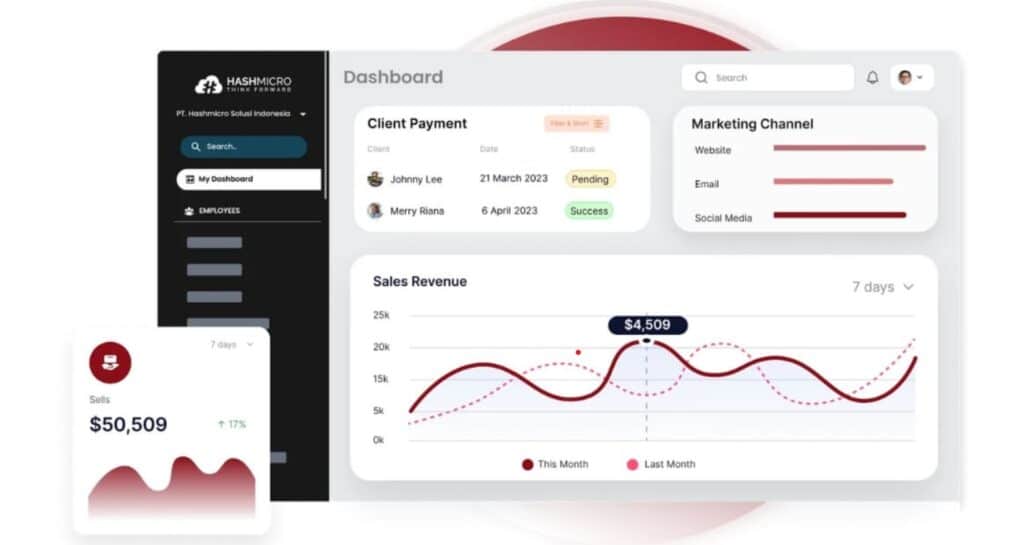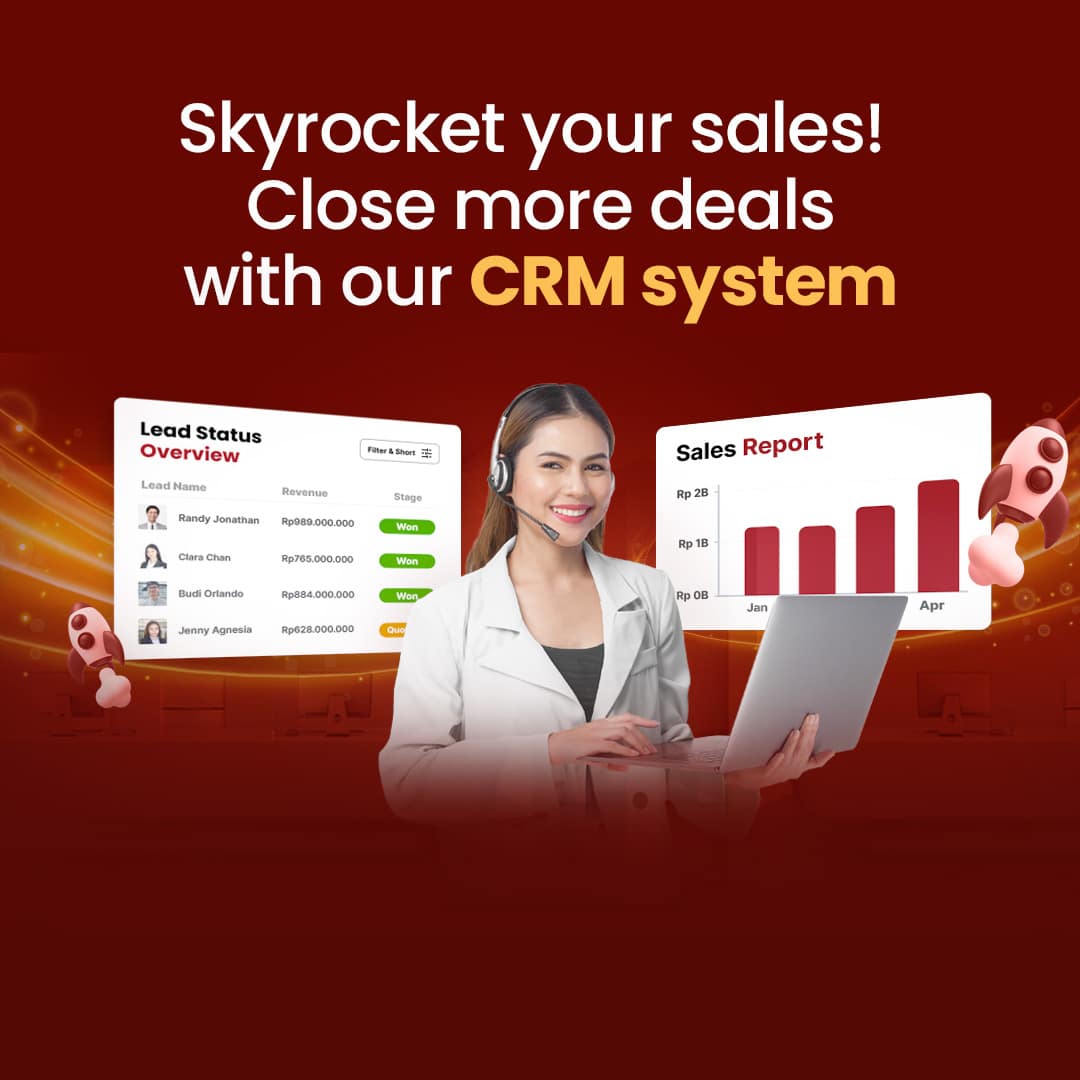Recognizing the full potential each customer brings is essential for businesses striving for sustained growth. Customer Lifetime Value (CLV) is a critical metric that calculates the total revenue a customer is expected to generate over their relationship with your business.
Unlike metrics that focus solely on individual transactions, CLV offers a complete view of customer value, which supports long-term planning. Understanding CLV equips businesses to make informed decisions on customer acquisition and retention, creating a strategic advantage.
When you know how much a customer is likely to contribute, you can direct resources wisely, focus on high-value customers, and ultimately boost your return on investment (ROI).
Throughout the article, we’ll guide you in understanding the essentials of CLV, including how to calculate it and leverage it for strategic growth. By the end, you’ll be ready to integrate this powerful metric into your business decisions, positioning your company for stronger customer relationships and greater profitability.
Key Takeaways
|
Table of Content:
Table of Content
What is Customer Lifetime Value?
Customer Lifetime Value (CLV) is a key financial metric that estimates the total revenue a business can expect from a single customer over the entire duration of their relationship with the brand.
By focusing on CLV, companies shift from valuing single transactions to recognizing the cumulative worth of a customer, allowing for strategic insights into long-term revenue potential.
This is such a different approach, unlike metrics such as Net Promoter Score (NPS) or Customer Satisfaction (CSAT) which focus on customer sentiment, CLV provides a clear measure of financial impact.
Why Do We Need Customer Lifetime Value?
-
You Can’t Improve What You Don’t Measure
-
Make Better Decisions on Customer Acquisition Costs
Knowing your average CLV allows you to optimize your spending on customer acquisition. You can confidently increase or decrease your budget based on projected earnings from each customer, ensuring that every money spent is a step towards maximizing profitability and attracting the right clientele.
-
Improved Forecasting
CLV forecasting equips you to make informed decisions about inventory, staffing, production capacity, and other critical expenses. Without accurate forecasting, businesses risk overspending and wasting resources or underspending and struggling to meet demand.
By leveraging CLV, you can enhance customer relationships and drive sustainable growth, turning each transaction into a long-term benefit. Therefore, embracing this metric is crucial for thriving in today’s competitive landscape.
Types of Customer Lifetime Value
Understanding Customer Lifetime Value (CLV) helps businesses sharpen their marketing strategies and strengthen customer loyalty. CLV generally comes in two forms: Historic CLV and Predictive CLV. Each offers unique insights that can steer business decisions toward growth and retention.
1. Historic Customer Lifetime Value
Historic CLV captures the actual amount a customer has spent with your business over a specific timeframe. Just imagine, a loyal diner who spends SGD 10 every week at a favorite hawker center in Singapore; over five years, their historic CLV adds up to SGD 2,600. This simple calculation shows businesses the revenue generated from each customer up to now.
Key Benefits:
- Performance Evaluation: Historic CLV allows businesses to assess customer relationships and identify loyal customers who contribute steady revenue.
- Customer Segmentation: By examining historic CLV, businesses can group customers based on buying habits, tailoring marketing strategies to reach each segment more effectively.
While historic CLV offers a valuable snapshot of past performance, it’s only part of the picture when it comes to predicting future value.
2. Predictive Customer Lifetime Value
Predictive CLV uses advanced algorithms and statistical methods to estimate the future potential of customer relationships. This approach takes historical spending data and combines it with additional insights, like customer demographics and purchasing frequency, to predict how long a customer may remain loyal and how much they’re likely to spend.
Key Benefits:
- Future Revenue Forecasting: Predictive CLV gives businesses a head start on planning by helping them anticipate revenue from their existing customers.
- Informed Investment Decisions: With insight into each customer’s potential future value, businesses can allocate resources more strategically, focusing on marketing and acquisition efforts where they’re most likely to pay off.
By combining historic and predictive CLV, businesses gain a full perspective: historic CLV provides an understanding of past contributions, while predictive CLV guides future planning and growth strategies. Together, they offer a solid foundation for effective, customer-centered business decisions.
Customer Lifetime Value by Industry
Understanding Customer Lifetime Value (CLV) can vary significantly across different industries. Each sector has unique characteristics and customer behaviors that influence how CLV is calculated and utilized. Here’s a breakdown of how CLV applies in various industries:
-
Retail
In retail, CLV is often derived from repeat purchases over time. For example, a clothing store might find that a customer spends an average of SGD 150 each season and continues to shop there for five years. This results in a CLV of SGD 3,000. Retailers use this information to enhance loyalty programs and marketing strategies.
-
E-commerce
E-commerce businesses track CLV through online purchasing habits. If a customer spends SGD 75 per order and makes four purchases a year over three years, their CLV would be SGD 900. E-commerce companies often leverage data analytics to optimize customer acquisition and retention strategies based on CLV insights.
-
Hospitality
In the hospitality industry, CLV is calculated by examining the frequency of stays and average spend per visit. Here’s an example of CLV, if a hotel guest pays SGD 200 per night and stays twice a year for five years, their CLV would be SGD 2,000. Understanding CLV helps hotels tailor their marketing efforts to encourage repeat bookings.
-
Telecommunications
Telecom companies calculate CLV based on monthly subscription fees and customer retention rates. If a customer pays SGD 50 per month for a mobile plan and remains with the provider for three years, their CLV would be SGD 1,800. These metric aids telecom providers in developing competitive pricing and loyalty programs.
-
Subscription Services
For subscription-based businesses, CLV is calculated by the subscription fee multiplied by the average retention period. For instance, if a streaming service charges SGD 10 per month and a customer stays for two years, their CLV would be SGD 240. This helps subscription services forecast revenue and refine content offerings.
-
Financial Services
CLV in the financial services industry derives from fees and interest earned over a customer’s account lifetime. For example, a customer maintaining a bank account generates SGD 5,000 in fees and interest.
Therefore, over ten years, their CLV totals SGD 5,000. This metric is crucial for banks to understand profitability and develop targeted services. By analyzing CLV across industries, businesses can tailor strategies, enhance relationships, and optimize marketing for sustainable growth.
How to Calculate Customer Lifetime Value

Lifetime Value of Customer metrics guide businesses in prioritizing marketing investments, refining customer retention strategies, and maximizing profitability. Here’s how to approach the calculation with clarity and precision, adaptable to any business:
-
Start with the Basic Formula
Calculating Customer Lifetime Value (CLV) using a consistent yearly value formula is one of the simplest and most effective methods for straightforward business models with minimal revenue fluctuations. This formula enables businesses to estimate long-term profitability per customer with clarity. Here’s how to calculate CLV step-by-step:
First, multiply the average annual revenue generated per customer by the expected duration of their relationship in years. Then, subtract the total acquisition and servicing costs to arrive at the net value:
Customer Lifetime Value = (Annual Customer Revenue x Customer Lifespan in Years) – Total Acquisition and Service Cost
For example, let’s take a SaaS (Software as a Service) business in Singapore that earns $1,000 annually from each customer, with an average customer relationship lasting 5 years.
If the cost of acquiring and servicing a customer totals $1,500, the calculation would be as follows:
CLV = ($1,000 x 5 years) – $1,500
= $5,000 – $1,500
= $3,500
This result shows that the business can anticipate a lifetime profit of $3,500 for each customer. By understanding this figure, companies can make informed decisions to allocate their marketing budgets efficiently, develop targeted retention strategies, and foster sustainable growth.
-
Expand for Customer Value and Lifespan
For a more dynamic approach, breaking down CLV into Customer Value and Average Customer Lifespan can yield deeper insights, especially in businesses with varied purchase patterns. Customer Value is calculated by finding the product of the average purchase value and the average purchase frequency rate:
Customer Value = Average Purchase Value x Average Purchase Frequency Rate
Once you have Customer Value, multiply it by the Average Customer Lifespan (the average time customers remain active with your business). This formula can handle shifts in customer spending, product lines, and retention efforts:
CLV = Customer Value x Average Customer Lifespan
-
Incorporate Customer Acquisition Cost (CAC)
Including Customer Acquisition Cost (CAC) in your CLV calculation offers a realistic profitability outlook. When CAC is factored into CLV analysis, businesses can assess whether the cost of acquiring each customer is offset by their lifetime value. Simply adjust the final CLV by subtracting CAC:
CLV with CAC = (Customer Value x Average Customer Lifespan) – Customer Acquisition Cost
-
Ensure Accurate Metrics and Data Integration
Reliable data is critical to accurate CLV calculations. Streamlining customer data sources into a centralized system, such as a CRM or ERP which enhances data consistency across transactions, touchpoints, and customer journeys. Integrating data from all departments also helps track and predict spending behavior, allowing for a nuanced, data-driven CLV.
-
Use an Automated CLV Calculator for Efficiency
Automated CLV calculators can simplify complex calculations by using real-time data to generate accurate lifetime values. This is especially useful for large-scale businesses that require ongoing CLV insights for strategic decisions.
How HashMicro’s CRM Software Can Help Calculate Customer Lifetime Value
Maximizing Customer Lifetime Value (CLV) is crucial for businesses aiming to build sustainable revenue and maintain long-term growth.
Additionally, with customer retention and personalized service essential in Singapore’s competitive market, businesses must do more than just manage basic interactions.
They need to track customer behavior in real time, anticipate future needs, and take timely actions to foster loyalty.
HashMicro’s CRM software provides the tools needed to achieve these goals by offering a comprehensive view of customer data, automating key processes, and optimizing retention efforts.
What sets HashMicro apart is its seamless system integration, cost-efficient scalability with unlimited users, and intuitive interface that reduces learning curves for teams. Many legacy solutions struggle with complex implementations or rigid reporting, creating roadblocks for fast-growing businesses.
In contrast, HashMicro ensures quick adoption and smooth operations, helping companies take control of customer data and unlock valuable insights. To further understand HashMicro CRM software, let’s take a look at several features below:
-
Leads and Opportunities Management
With HashMicro’s CRM, businesses can comprehensively track interactions across the customer lifecycle, including emails, meetings, and calls. This visibility enables sales teams to determine customers’ buying stages and act promptly.
As a result, Singaporean businesses can align lead data with customer lifetime value (CLV) projections, ensuring that sales efforts focus on the most promising prospects.
-
KPI-Driven Follow-Up and Retention Management
The platform organizes follow-ups through KPI-based tracking, helping teams concentrate on retaining high-value clients. With real-time progress monitoring, businesses can intervene early to enhance customer retention.
By prioritizing clients with higher potential, businesses can increase customer lifetime value (CLV), ensuring they extract maximum value from their customer base over time.
-
Advanced Customer Insights with Pivot Analysis
The CRM offers in-depth pivot analysis to segment customers based on purchase history, preferences, and behavior patterns. These insights help companies develop strategies tailored to individual customer needs. In contrast, traditional systems often lack flexible reporting, making it challenging to accurately identify high-value customers and predict future engagement.
-
Automated Email Campaigns and Intelligent Lead Scoring
HashMicro’s automated email tool helps marketing teams nurture leads, while lead scoring highlights the best prospects for conversion. Additionally, this targeted approach allows businesses to focus on high-potential customers, driving loyalty and maximizing long-term value through precise lead evaluation.
-
Comprehensive Sales and Marketing Reports
The platform consolidates sales activities, customer interactions, and campaign performance into detailed reports. These reports enable businesses to fine-tune engagement strategies and adapt to market changes.
Real-time insights empower Singaporean businesses to swiftly adapt to customer preferences, boosting satisfaction and loyalty along the way.
-
Mobile CRM for On-the-Go Access
Conclusion
Prioritizing Customer Lifetime Value (CLV) is crucial for businesses seeking sustainable growth in today’s competitive market. Understanding a customer’s potential revenue helps companies prioritize long-term profitability over individual sales.
This approach not only helps businesses make better decisions about acquiring and retaining customers but also ensures that resources are allocated effectively. Ultimately, focusing on CLV drives customer loyalty and maximizes return on investment.
To make the most of CLV insights, businesses in Singapore can greatly benefit from HashMicro’s CRM software, which integrates seamlessly with their Sales Leads Management Solution. With features like detailed customer insights, automated email campaigns, and mobile access, HashMicro empowers teams to nurture leads and strengthen customer relationships efficiently.
By trying the free demo of HashMicro, you can see for yourself how these powerful tools can enhance your business growth and improve your customer interactions. Don’t miss out on the chance to transform your approach to customer lifetime value!




































